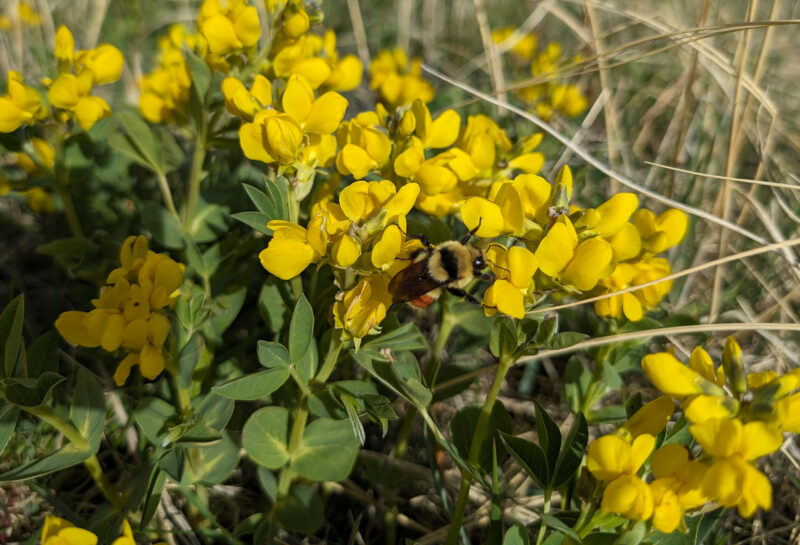![]()

By Laurie Zitterkopf, Nebraska Extension Master Gardener | Chabella Guzman PREEC Communications
The Scotts Bluff County Court House garden in Gering will be undergoing an update in the spring of 2025. Spearheading the update will be the Nebraska Master Gardeners of Scotts Bluff County with funds from A Watchable Wildlife Grant, Nebraska Statewide Arboretum, or Keno Funds.
“We’ll be bringing together our local Scotts Bluff County 4-H youth, Scotts Bluff County Inmates (work detail), the Scotts Bluff County Court House Maintenance Crew, and the Master Gardeners,” said Laurie Ziterkopf, Nebraska Extension Master Gardener. “The garden should show our community and visitors the new garden ethic that many others have been promoting with our state and country. We all need to do our part at bringing nature home.”
Using guidelines for native landscape design from the Nebraska Statewide Arboretum, the project will create a garden focusing on the larval (caterpillar) stage of a butterfly’s life cycle. The Nebraska Lepidoptera website gives a comprehensive guide to Scotts Bluff County butterflies and moths.
With the knowledge of what butterflies are in the community, research will be done of what host plants are needed. Plant choices will begin with host plants meeting the environmental needs of the garden. The garden is in full sun, has a watering system, and has a goal of using the watering system in the driest periods after the plants are established.
“This past growing season, the Scotts Bluff Maintenance Crew has been spraying the garden space to give us a clean slate to start from. Our garden will be ready to plant in the spring,” Zitterkopf said.
Insects are critical to our ecosystems. They depend on various spring, summer, and autumn bloomers protected from pesticides. The garden will be tended to with the insect’s life cycle in mind. As much vegetation will be left standing throughout the winter. In the spring, stems that need to be cut back will be cut with at least 12 inches standing, and the cut portion will be left in the garden for mulch. So any insect that might be in the stem may finish its life cycle.
The garden design is not maintenance free but for lower maintenance in years to come. A thin layer of mulch will be applied during the first year, but with the living mulch plants that will be used, no further mulch applications should be needed.
The garden will be educational for youth and adults working on the installation. Informing the public, signage will be placed explaining the plant choices, which are hosts for caterpillars and garden maintenance.
For more information and to get involved, contact Audra Brown at 308-632-1484 or abrown132@unl.edu.
